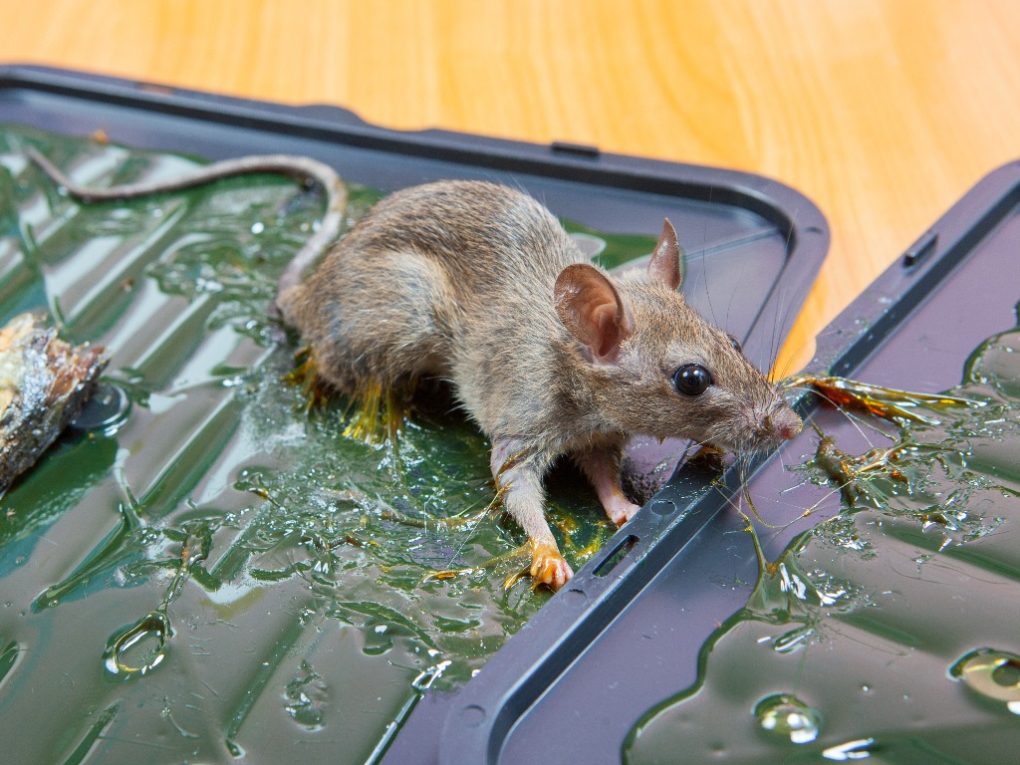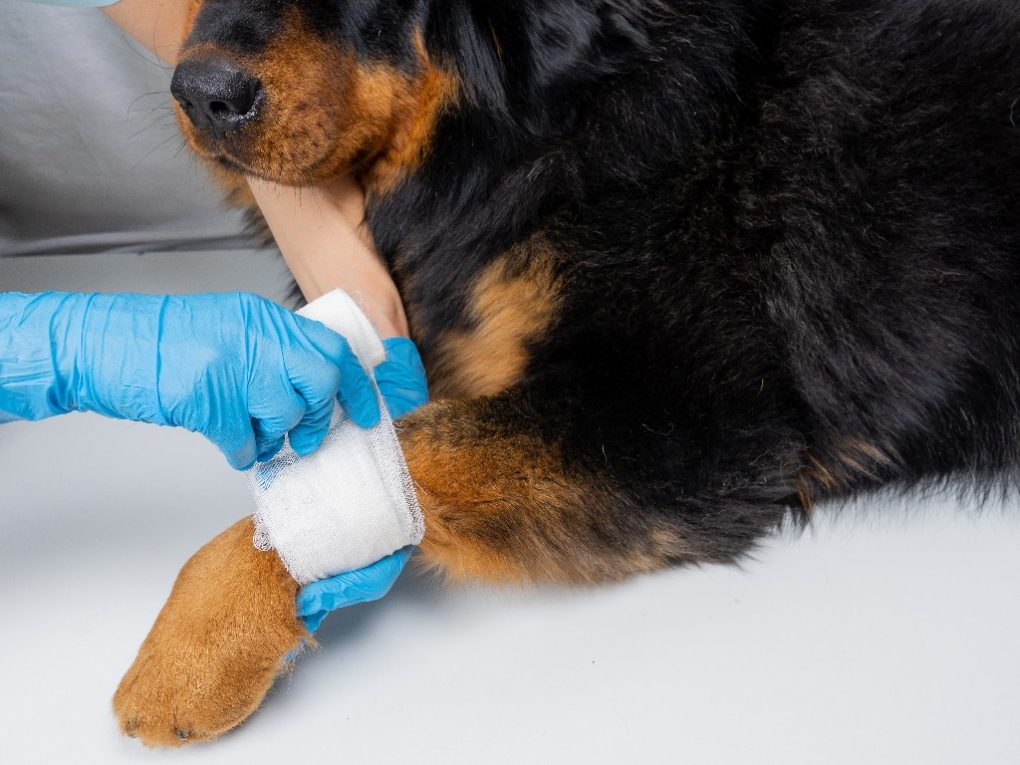Are Glue Traps Toxic to Dogs: Understanding the Risks of Glue Traps for Your Pet
No, most glue traps are not toxic to dogs. However, they can still be dangerous. For example, if a dog steps on a glue trap, the adhesive can get stuck to its paws, causing discomfort and potentially leading to injuries. In some cases, dogs may even ingest the glue, which can cause gastrointestinal problems and other health issues.


Pet owners need to take precautions to prevent their dogs from coming into contact with glue traps. This may include keeping traps out of reach, using alternative methods for pest control, or closely monitoring pets when traps are in use. By taking these steps, pet owners can help ensure the safety and well-being of their furry friends.
The Risks of Glue Traps for Dogs
Ingestion
Ingestion of glue traps by dogs can occur if they try to chew on the trap or accidentally lick the adhesive. Glue traps are designed to be sticky, and if a dog ingests a significant amount of the adhesive or the materials of the trap, it can form a sticky mass in its digestive tract.
This can cause a blockage or obstruction in their gastrointestinal system, leading to vomiting, diarrhea, abdominal pain, and loss of appetite. Gastrointestinal blockages can be serious and require emergency veterinary intervention, including surgical removal.
The adhesive used in glue traps can irritate the mucous membranes of a dog’s mouth, throat, and gastrointestinal tract. Ingesting the adhesive can lead to symptoms such as drooling, pawing at the mouth, gagging, or discomfort.
The adhesive can also stick to the walls of the digestive tract, causing inflammation, irritation, or even erosions of the lining. While most glue traps are non-toxic, some may be baited with toxic substances to increase their effectiveness in catching pests. These toxic baits can pose a risk of poisoning dogs if ingested.
The toxic substances may vary depending on the type of pests being targeted, but they can include insecticides, rodenticides, or other chemicals that are harmful to dogs when ingested. Ingestion of toxic bait can lead to a wide range of symptoms depending on the type and amount of poison, including vomiting, diarrhea, weakness, tremors, seizures, and even organ failure.
Physical Injury
Dogs may step on a glue trap, and the adhesive can immediately stick to their paw pads. As they try to pull their paw away, the adhesive can pull on their skin and fur, causing cuts, abrasions, or skin tearing. The dog may also inadvertently step on the edges of the trap, resulting in injuries to their paw pads, nails, or legs.


The strong adhesive on the glue trap can easily catch and entangle a dog’s fur. As the dog struggles to free themselves, the adhesive can mat their fur, leading to painful pulling and tearing of the fur and skin. This can result in skin wounds, lacerations, or even partial hair loss.
Dogs may accidentally step or lie on a glue trap, and the adhesive can stick to their body, such as their chest, belly, or sides. As they try to move or escape, the adhesive can cause their skin to stretch or tear, injuring their skin and underlying tissues.
To free themselves, dogs may excessively lick, chew, or bite at the glue trap or their trapped body parts. This can lead to further injuries, including broken nails, torn skin, and bleeding.
In extreme cases, dogs may struggle violently to break free from a glue trap, resulting in fractures or dislocations of their bones or joints. Dogs may injure themselves by thrashing or pulling forcefully, resulting in trauma and potential long-term damage.
Psychological Distress
Dogs may become fearful and anxious when trapped in a glue trap. The sticky adhesive can cause discomfort and pain, and the dog may struggle to free itself, further exacerbating its fear and anxiety. Being trapped and unable to move or escape can be distressing for dogs and may lead to heightened fear and anxiety.
They may experience panic and stress when stuck in a glue trap. The inability to move or escape from the trap can trigger a fight-or-flight response, leading to increased heart rate, rapid breathing, and heightened stress levels. In addition, the dog may vocalize, whine, or bark in distress, and their behavior may become agitated or frantic.


Dogs trapped in a glue trap for an extended period may become depressed or exhibit signs of apathy. The stress, fear, and discomfort associated with being trapped can affect their mental well-being, leading to decreased appetite, lethargy, withdrawal, and a lack of interest in their surroundings or usual activities.
As such, dogs may exhibit changes in their behavior due to the psychological distress caused by glue traps. This can include aggressive or defensive behavior, such as growling or snapping, as the dog may feel threatened or cornered.
Dogs may also exhibit escape behaviors, such as scratching, chewing, or digging at the trap or their surroundings to free themselves. It’s important to note that psychological distress caused by glue traps can have significant negative impacts on a dog’s overall well-being and may require appropriate intervention.
In my experience, dogs under psychological distress due to glue traps should be handled with care, and it’s best to seek professional help from a veterinarian or a qualified animal behaviorist to address their emotional and behavioral needs.
Skin and Coat Damage
The sticky adhesive used in glue traps is designed to immobilize pests, but it can also cause harm to a dog’s skin and coat. For example, when a dog comes into contact with a glue trap, the adhesive can stick to its skin and coat.
The adhesive can be difficult to remove and may cause the fur to become matted, clumped, or tangled. Attempts to remove the adhesive by licking or grooming can worsen the issue, potentially leading to further matting or damage to the fur. In addition, the adhesive may pull on the skin in severe cases, causing pain and discomfort.
The adhesive can damage a dog’s coat, especially if it is not easily removed. The fur may become matted, tangled, or clumped together, which can be unsightly and difficult to manage. In severe cases, the coat may become so damaged that it requires shaving or trimming, which can be stressful for the dog and may take time to grow back.
Also, the adhesive on glue traps can cause hair loss in dogs. When the adhesive sticks to the fur, attempts to remove it can pull on the hair, leading to hair breakage or pulling out of the hair from the root. This can result in patches of hair loss, which may take time to grow back and require veterinary attention.
The adhesive on glue traps can irritate a dog’s skin, causing redness, inflammation, and discomfort. The adhesive may adhere to the skin tightly, leading to pulling or tearing the skin when the dog attempts to free itself. This can result in abrasions, cuts, or other skin injuries, which can be painful.
Prolonged contact with the adhesive on glue traps can cause dermatitis or skin infections in dogs. The adhesive may disrupt the skin’s natural balance, leading to inflammation, bacterial or fungal overgrowth, and secondary infections. This can cause discomfort, itching, and skin lesions and may require veterinary treatment.
